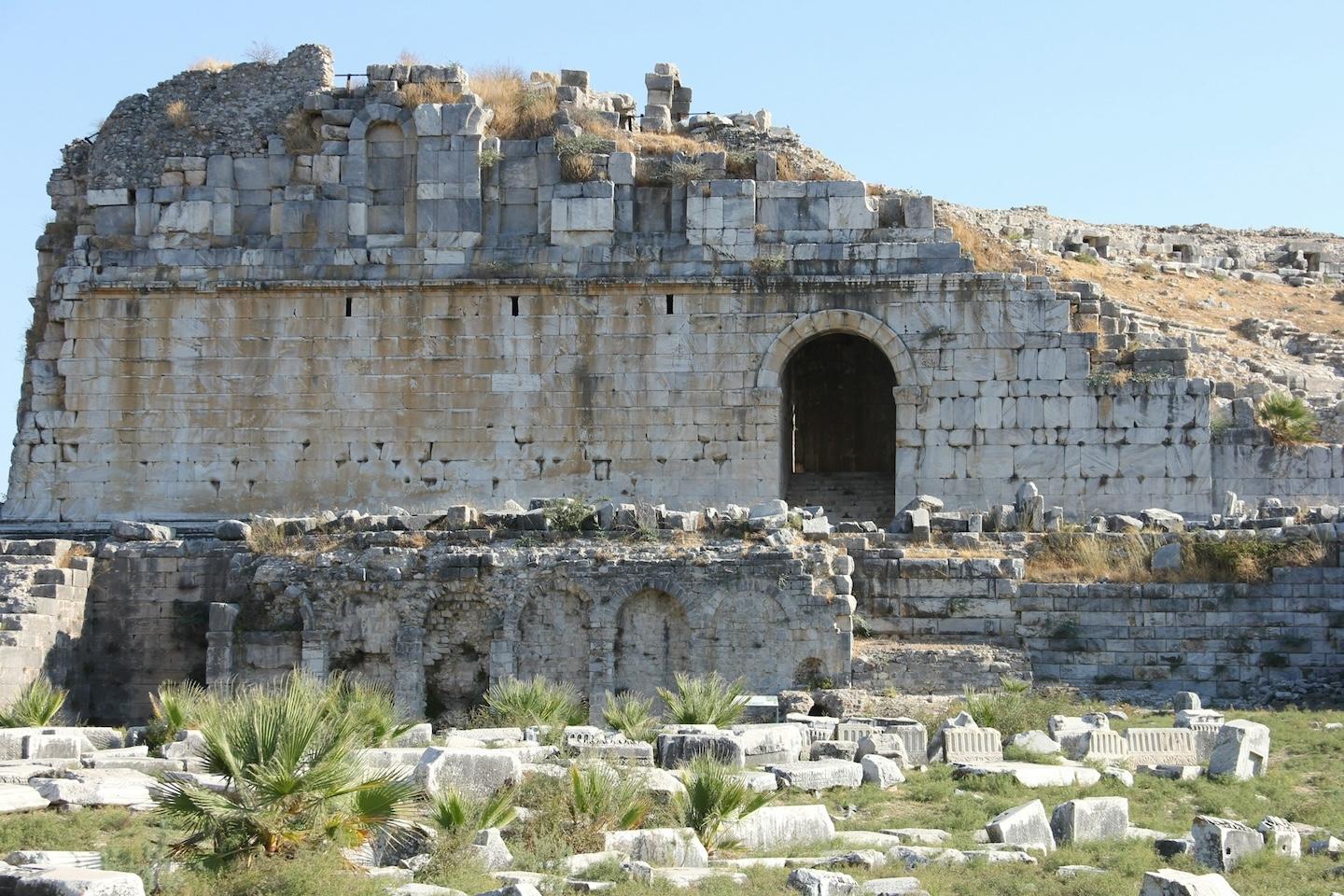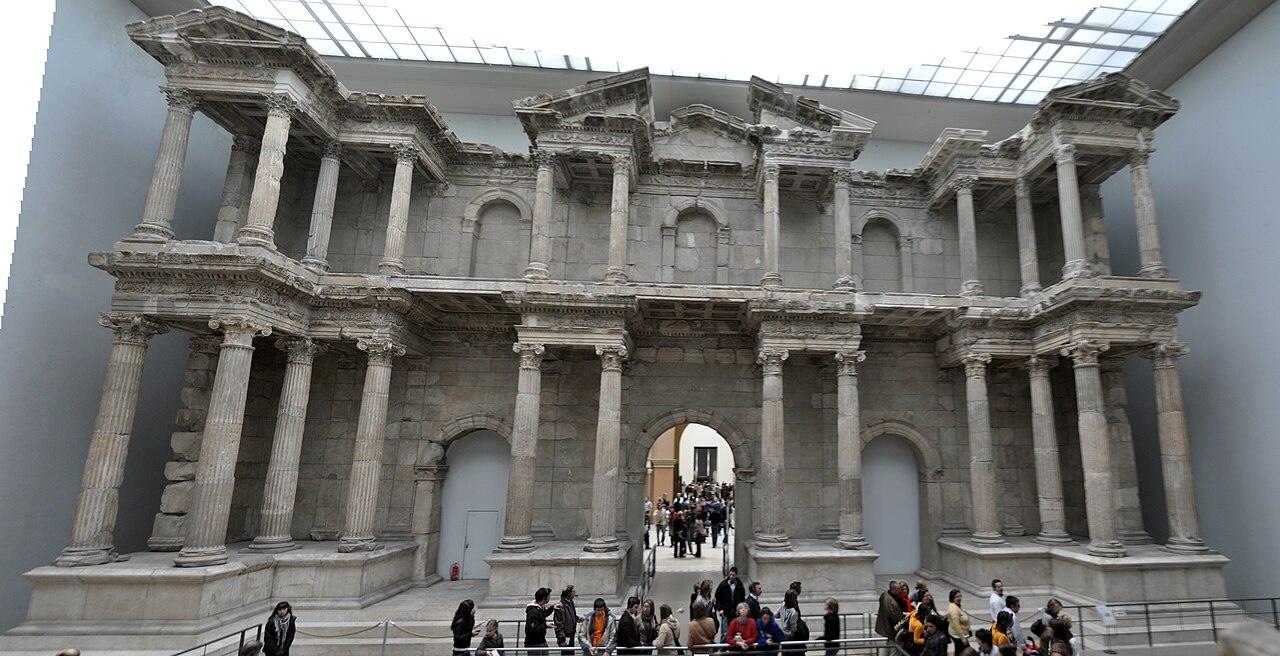Miletus
Home of Philosophers and Maritime Power
Once one of the greatest cities of the ancient Greek world, Miletus was renowned for its philosophers and harbor trade. Its grid-planned streets, theater, and the nearby Temple of Apollo reflect its prominence during the Hellenistic and Roman periods.

1.History
Miletus was one of the most important cities of ancient Ionia, located near the mouth of the Maeander River, close to the modern village of Balat in Turkey’s Aydın Province. Its strategic location made it a significant cultural and economic hub for over 1,400 years, spanning from the 15th century BC to the 7th century AD. Miletus was renowned for its wool trade, having extensive connections with cities such as Sybaris in southern Italy, and became one of the twelve Ionian cities that formed the Ionian League.
Miletus’s history dates back to the Late Bronze Age, with ties to both the Hittite Empire and the Mycenaean civilization, as evidenced by records from Pylos and Knossos. During the Trojan War, Miletus was allied with Troy, and the city was known as a hub for the Carians, led by Nestor and Amphimachus, as Homer notes in the Iliad. The city later became a significant member of the Ionian League.By the 6th century BC, Miletus had risen to become one of the most powerful Greek cities, controlling a vast maritime empire and founding numerous colonies across the Mediterranean and Black Sea regions. This period saw the flourishing of philosophy, with thinkers such as Thales, Anaximander, and Anaximenes, all originating from Miletus and contributing to the foundations of Greek philosophy. Thales, for instance, is often regarded as the first philosopher in the Greek tradition, and his work in astronomy and mathematics laid the groundwork for future discoveries.
Under Roman rule, Miletus continued to thrive, benefiting from its strategic position as a trade hub. However, the city’s fortunes began to decline as the Maeander River silted up the harbor, cutting off access to the sea. The Roman emperor Justinian attempted to restore the city’s defenses in AD 538, but Miletus had already started to decline into a small town by then. Excavations show that most of the remaining monuments, such as the Great Theatre and the Market Gate, date from the Roman era.The city’s harbor continued to silt up, causing economic decline, and by the time of the Seljuk Turks in the 14th century, Miletus was used only as a port for limited trade. It was eventually abandoned as an urban center when the coastline retreated too far inland.
Archaeological Excavations and Notable Structures
The Great Theatre: Initially built in the Hellenistic period with a capacity of around 5,000 seats, it was later expanded during the Roman period to accommodate up to 15,000 spectators. The theatre is a stunning example of Roman engineering, and its position overlooking the once-active harbor created an awe-inspiring view.he Temple of Apollo Delphinius: This temple was an important religious center for the city, dedicated to Apollo as the god of oracles.The Baths of Faustina: Constructed in the 2nd century AD, these Roman baths were named after Faustina the Elder, the wife of Emperor Antoninus Pius. They are a fine example of Roman public architecture.The Market Gate of Miletus: Reconstructed in the Pergamon Museum in Berlin, the gate once stood as a grand entrance to the market area, highlighting the city’s importance as a center of commerce.

Miletus’s contributions to philosophy, architecture, and urban planning have left an enduring legacy. Its right-angle street layout, attributed to Hippodamus, became the blueprint for future city planning in both Greek and Roman cities.Miletus was not only a city of political and commercial significance but also a cradle of early Greek philosophical thought. Its strategic location as a bridge between Anatolia and the Aegean world played a key role in the exchange of ideas, goods, and cultures across the Mediterranean.
Miletus holds a special place in history as a city that thrived for centuries due to its economic prowess, intellectual contributions, and its architectural innovations, but its decline is a reminder of the transient nature of urban power, as the once-thriving harbor city was gradually left inland by the forces of nature.
2.How to get there
To reach the Miletus Ancient Site, head to Didim District in Aydın Province. Miletus is about 22 km north of Didim center. You can take the Didim-Güllübahçe Road if traveling by private vehicle, following signs directing toward the site. Public transport options such as minibusses, midibusses, and taxis are available from the Didim center and Altınkum area, providing easy access to Miletus. The journey typically takes around 30 minutes by car or taxi.
3.GALLERY





4.Explore Nearby Sites
You can also explore several nearby historical spots around Miletus. These close-by attractions offer further insight into the rich history of the region and are easily accessible for visitors wanting to extend their journey:

